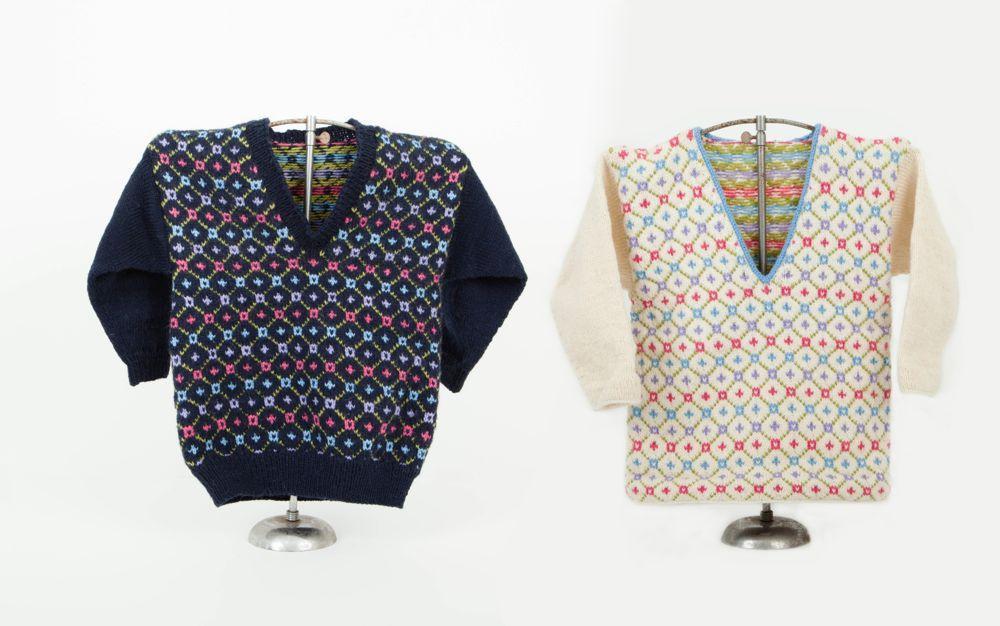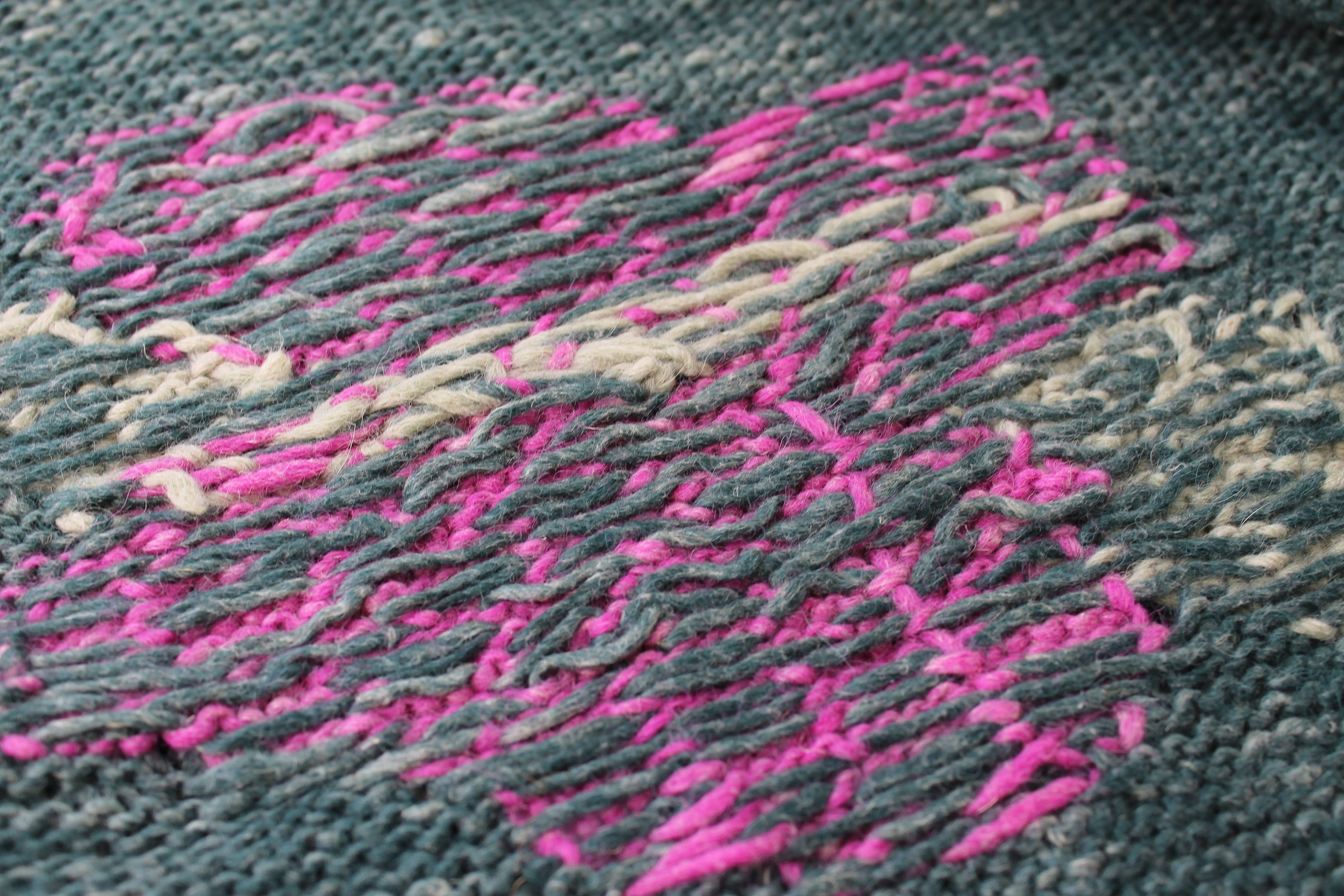
Photo via Craftsy instructor Amy Detjen
1. Wrong side pride
Be as concerned about what the wrong side of your work looks like as you are the front side. When I’m trapping floats, I always ask myself, would I be ashamed to show another knitter my wrong side? Take a look at the wrong sides peeking out from Craftsy instructor Amy Detjen’s sweaters pictured above. The wrong side, which you can barely see below the neck of the sweater, looks just as beautiful as the front! The patterns for these sweaters are part of Amy’s Simple Sweaters: Stranded & Steeked class, where Amy show you her tricks for knitting a wrong side that’s just as beautiful as the right side!2. Try Portuguese knitting
The Portuguese knitting style involves using a knitting pin to control the yarn. It’s especially useful for working with multiple strands, and it can help you trap those knitting floats without tangling the yarn. Plenty of knitters use this style solely for stranded color work.3. Trap floats longer than an inch
The general rule for trapping floats is to trap strands that are longer than an inch. Any float shorter than an inch is free to lay across the back of the work as it pleases, but if it’s longer than an inch, there’s a danger of it catching on jewelry and even fingers — especially important if you’re using floats on a sweater or a pair of mittens.Photo via The Feisty Redhead


Share tips, start a discussion or ask one of our experts or other students a question.
No Responses to “Take Pride in the Wrong Side: 6 Tips for Trapping Knitting Floats”